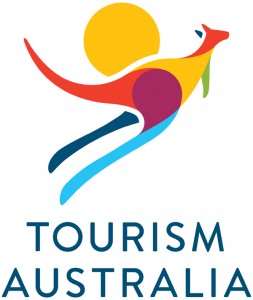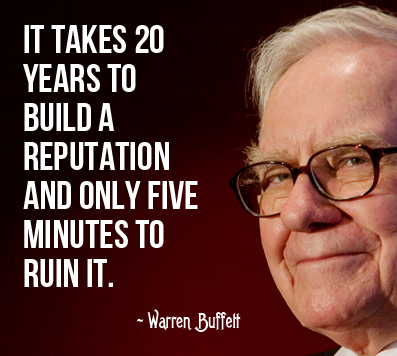Destinations International, the organization formerly known as DMAI – Destinations Marketing Association International – recently held its annual convention in Montreal, Canada.
More than 1,400 delegates from over 11 different countries gathered to discuss and hear about latest trends and issues for destination marketers around the world, with an obvious bias and focus in North America.
I attended various educational sessions, but wanted to share with you some highlights from a presentation made by Jesse Desjardins, Global Manager, Digital Marketing for Tourism Australia.
Why? Because I think what he covered in his session not only applies to destination marketers, but perhaps to most travel marketers as well, from hoteliers to restaurateurs and event managers alike.
The 5 Things That Keep Us Up At Night…
 Tourism Australia has been at the forefront of many digital travel marketing initiatives in the past and is certainly one of the social media marketing leaders out there across all industries, and certainly in the travel and hospitality vertical.
Tourism Australia has been at the forefront of many digital travel marketing initiatives in the past and is certainly one of the social media marketing leaders out there across all industries, and certainly in the travel and hospitality vertical.
Yet, they combat similar challenges as smaller destinations or even smaller travel brands must. Here are five things that keep Jesse and his team up at night, apparently:
1. How Do I get Better Creative
The very first piece of advice from Jesse was worth its weight in gold: stay away from stock images! Too many destinations sell themselves short by reverting to standardized, flavorless shots of the same perfect white couple strolling down a non-specific pristine beach… that could be just about anywhere!
Tourism Australis has set its vision clearly a while back – and even made it available to anyone interested, for that matter, just click here – and rely heavily on user-generated content (UGC) across its social platforms.
For example, every Friday they share pictures from fans on their Facebook page, while every Monday is where you’ll find out what Australia ate over the weekend, with pics curated with hashtag #RestaurantAustralia.
The challenge, as Jesse explained, is to “create something that will breed further ideas“. In other words, tapping into the wisdom of crowds for better videos, better images and overall better stories to tell. A great example? How Royal Jordanian poked fun at Trump’s infamous travel ban, even before he was elected! Call it the campaign, or gift, that keeps on giving…
2. How Do We Produce More Videos
Another genuine concern relates to how destinations, or travel brands in general, can ensure more video production, without breaking the bank or incurring additional marketing costs.
As we know, it is said that up to 70-80% of all web traffic will be video-related by 2020, which means brands must get on board if they wish to be a part of the conversations with travelers.
Today, formats are also much more varied than they were only a few years ago: Facebook regular videos, whether organic or paid, Facebook Live, Instagram videos, Instagram Stories, Messenger Day, Snapchat Stories, Twitter videos, etc.
Read also: Video Integration Is Next Step In Travel Storytelling
3. How Do I generate more from every story
Now this is an interesting challenge that I have found to be universal, and not just within the traval and hospitality sphere. Brands work so hard to generate content, and too often we just settle with publishing a post or article, and perhaps share it once on various social platforms.
We ought to share, share and share again across our various digital outposts, from corporate newsletter to blog to Facebook. And we shouldn’t shy away from repurposing content across different platforms.
“Don’t just tell a story, give a story to tell”
As Jesse explained, part of the solution here also resides in giving a story to tell so that every individual can make its own version. So here’s one question for you: does your travel brand have a dominant hashtag used across various campaigns, offline and/or online?
That is certainly a first step in getting people to share your story, as you will be able to monitor the discussion and share content accordingly across social media accounts.
A great example, one that didn’t cost nearly as much as you think it may have, was when Tourism Australia introduced its Giga Selfie promotion, targeting Japanese travelers in particular.
This idea got the destination tremendous buzz, and allowed for travelers and travel trade alike to tell the story from various angles.
Read also: 8 key elements for an effective hashtags
4. How do I build more trust
Trust is a fickle thing, and we all know this can be difficult to sustain over time, specially in this digital era where reputations come undone so quickly with a few bad reviews left unattended.
So how does a destination like Australia handle this reality? They operate social media in 11 countries and in 14 different languages, essentially trying to be where their clients are, or at least having a discussion.
They also have a policy in place to answer most, if not all, comments and questions left on social platforms managed by Tourism Australia, even though most of the time it is the community itself that handles answering queries or giving recommendations.

Having a strong UGC-based content approach has also helped building a more authentic voice for the brand, which in turn results into higher trust-worthiness.
5. How can I set the stage?
Last but not least, how are you ensuring your customers know about your online presence and spread the good word about their experience?
The above example goes back more than two years ago but still exemplifies how destinations – such as Denmark – can set the stage and let travelers know how and where to share their stories.
I have seen restaurant owners put up their brand hashtag on their chalkboard menu, and hoteliers plaster their lobby or elevators in a similar fashion. Too often, however, we are left in the dark and must guess what the hashtag may be or what social account we could tag in a Facebook or Instagram post.
Of course, there are many other aspects of managing destination marketing that can keep some folks up at night, but that would have to be covered in a separate, not so light-hearted article… 😉









Leave a Reply